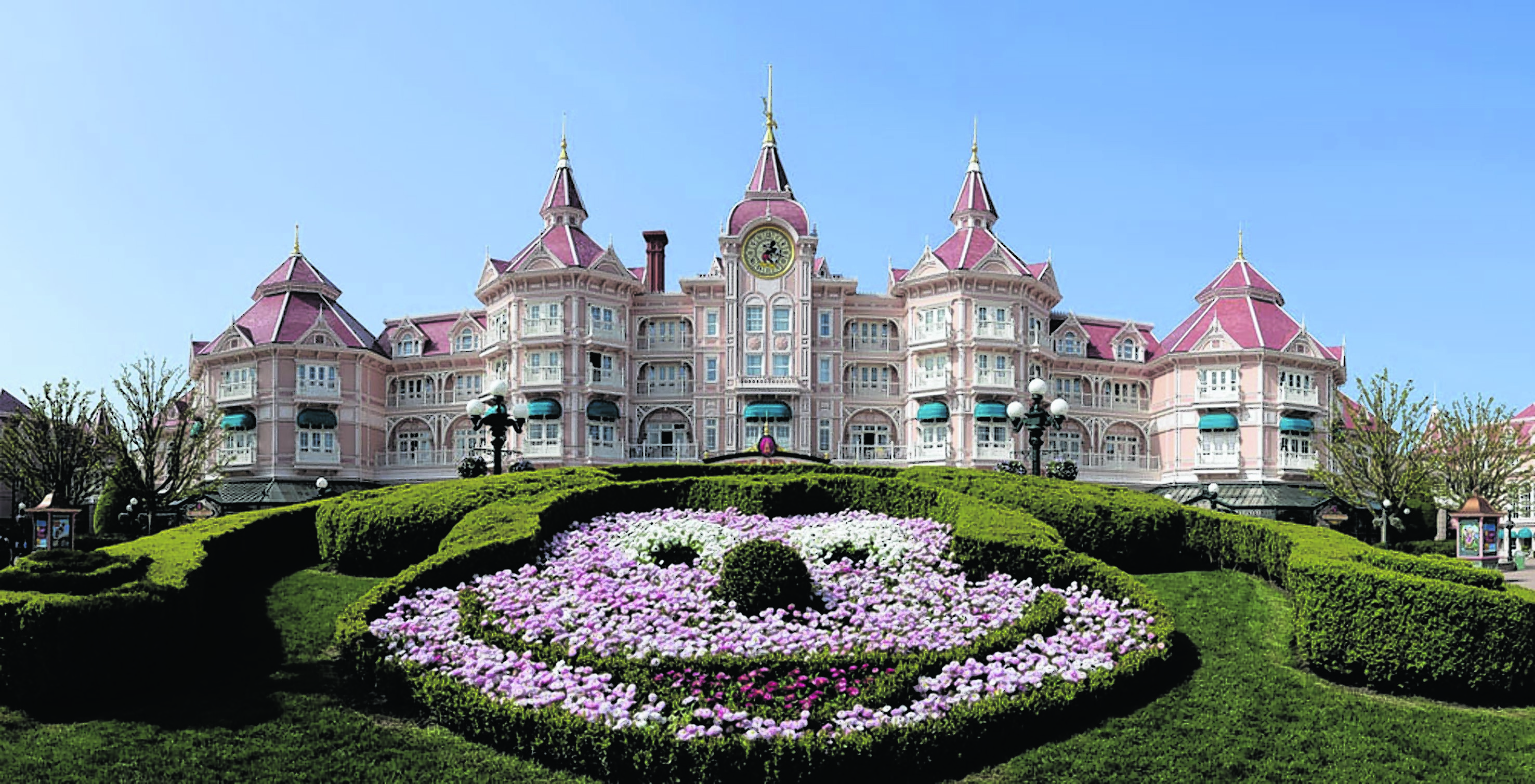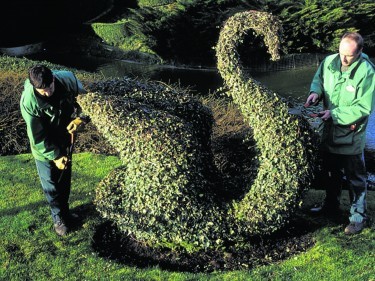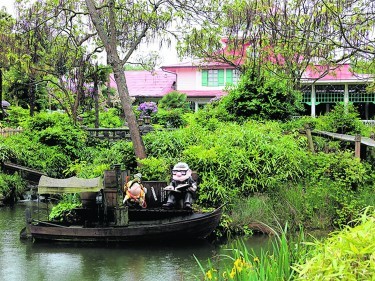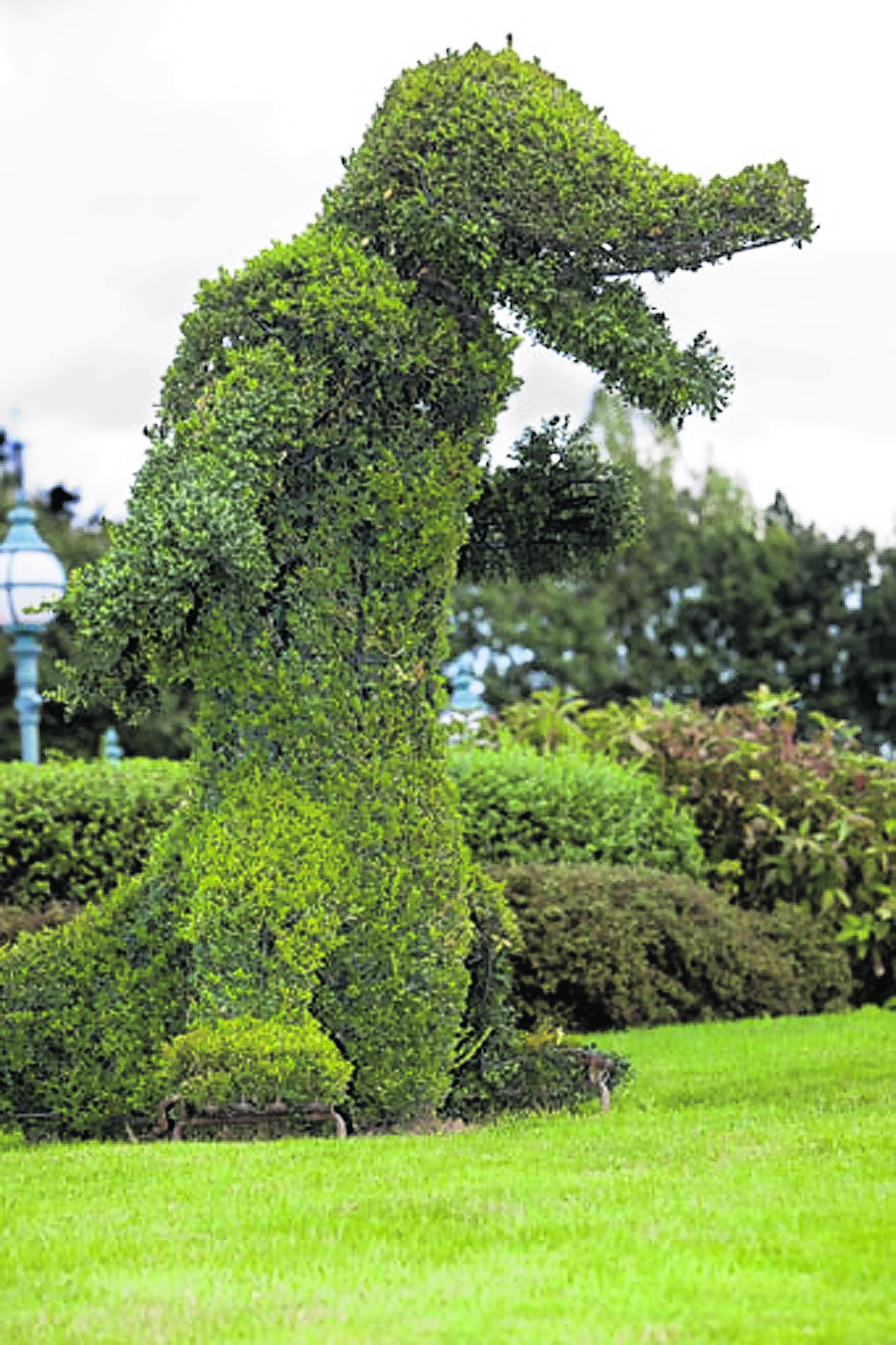Behind the Disneyland Paris landscape is a team of 140 gardeners who help prepare the park for the season ahead. Hannah Stephenson visits the gardens to see how the magic is created
As families enter the wonderful world of Disneyland Paris with its quirky characters, pink castle, fairytale lands and breath-taking parades, few will notice the quality of the plants, the precision cutting of the lawns or the carefully clipped topiary.
Yet the gardens in this famous resort are vital to recreate the theme in each zone, from the prickly cacti, yucca and tamarind in the Arizona desert of Frontierland, to the exotic-looking palms (which can actually withstand temperatures of up to -18C) and bamboos in Adventureland, and piano-key topiary and manicured hillside lawns next to Sleeping Beauty’s pink castle.
In the skyline of the haunted house, huge evergreen trees lean ominously towards the building, having been deliberately planted at an angle for spooky effect, while spiky shrubs hang menacingly over the tall gated perimeter, pruned to look like claws.
Pansies, heathers, heucheras and wallflowers fill the beds with the arrival of the park’s colourful spring festival. But the park is also paying more than lip service to biodiversity.
Luc Behar-Bannelier, the park’s director of nature and environment, who has been there for 23 years, told me how it has been transformed from corn and beet fields into a magical landscape which is also environmentally friendly.
When he first took on this mammoth project 25 years ago, workers had to remove tons of heavy clay soil and replace it with a thin layer of topsoil. Trees were brought in from as far away as British Columbia and Canada, but now they are sourced in Europe.
About 300 of the 35,000 trees are replaced every year to ensure everything remains to scale. Over the years, the planting has attracted wildlife which hasn’t been “bought” in, said Luc.
“We have Canadian geese on the waterways, while on the ranch section, we get wild boar, where there was once just corn and sugar beet. There’s also a huge variety of insects and birds, and on a recent bird count, we found more species than we used to have.”
Attracting wildlife is improving the balance of nature, added head of horticulture, Pierrick Paillard.
“We had a particular type of caterpillar that use to thrive on our pine trees, but their hairs would fall off and cause skin irritations. However, the blue tits which have arrived in the park feed on them, so it’s working well.”
Disneyland Paris has 80 beehives in its backstage area, which is not accessible to the public, so its hotel guests can enjoy home-made honey for breakfast. The park is also home to a flock of rare breed Solognote sheep who graze the brushland in the ranch area.
Nuisance wildlife has also ventured in, including rabbits, which eat the plants, and seagulls, but falcons are brought in every so often to disturb them. Some 90 wasp traps are also strategically placed out of view of guests.
Disneyland Paris is the first theme park in Europe to have its own water treatment and recycling plant on site to filter grey water for use on the gardens. Huge basins backstage collect rainwater which is recycled, while home-made compost is dug back into the land.
While many of the plants which are susceptible to pests and diseases, such as grey mould, are treated before they arrive at the park, Pierrick said: “In 10 years, we would like to have no insecticides or pesticides. We are increasingly using natural products to keep the balance of nature intact, and bringing in beneficial insects such as ladybirds, whose larvae eat thousands of aphids.”
Keeping everything to scale is all-important, he continued. Trees are regularly pruned to ensure no photo opportunity is lost in a sea of branches.
“The oak trees in Main Street have been changed twice since 1992. Tree specialists have to select a number of branches to be pruned so you can see through them, so it looks like lace. Trunks cannot become too thick.”
Many of the trees are pruned from the base upwards to 2.5metres to prevent visitors from either pricking themselves on thorns or eating berries.
Some 360 topiaries including a giant caterpillar, dragon, elephant and swans also adorn the park. Box, yew, fast-growing box leaf honeysuckle (Lonicera nitida) and ivy are used to create the shapes – although at present there are no giraffes because the necks proved difficult to maintain.
Banks of rhododendrons and azaleas will be providing dazzling colour in May, while grass – all 35million square metres of it – has to be lovingly tended. The low fences don’t stop the public from spilling out on to the raised grass verges for a better view of the parade at the hub, at the centre of the park. So each week during the summer, new turfs are laid in this area to keep it looking good.
Gardeners have to wear harnesses and spiked shoes when mowing
the steep grass hills which surround Sleeping Beauty’s castle, while beds and borders throughout the park are regularly replaced with fresh, new plantings.
“No corner of the park is left to chance, no plant is allowed to dominate others,” Pierrick added.
Who says Disneyland is only for kids? It’s pretty amazing for gardeners too.



